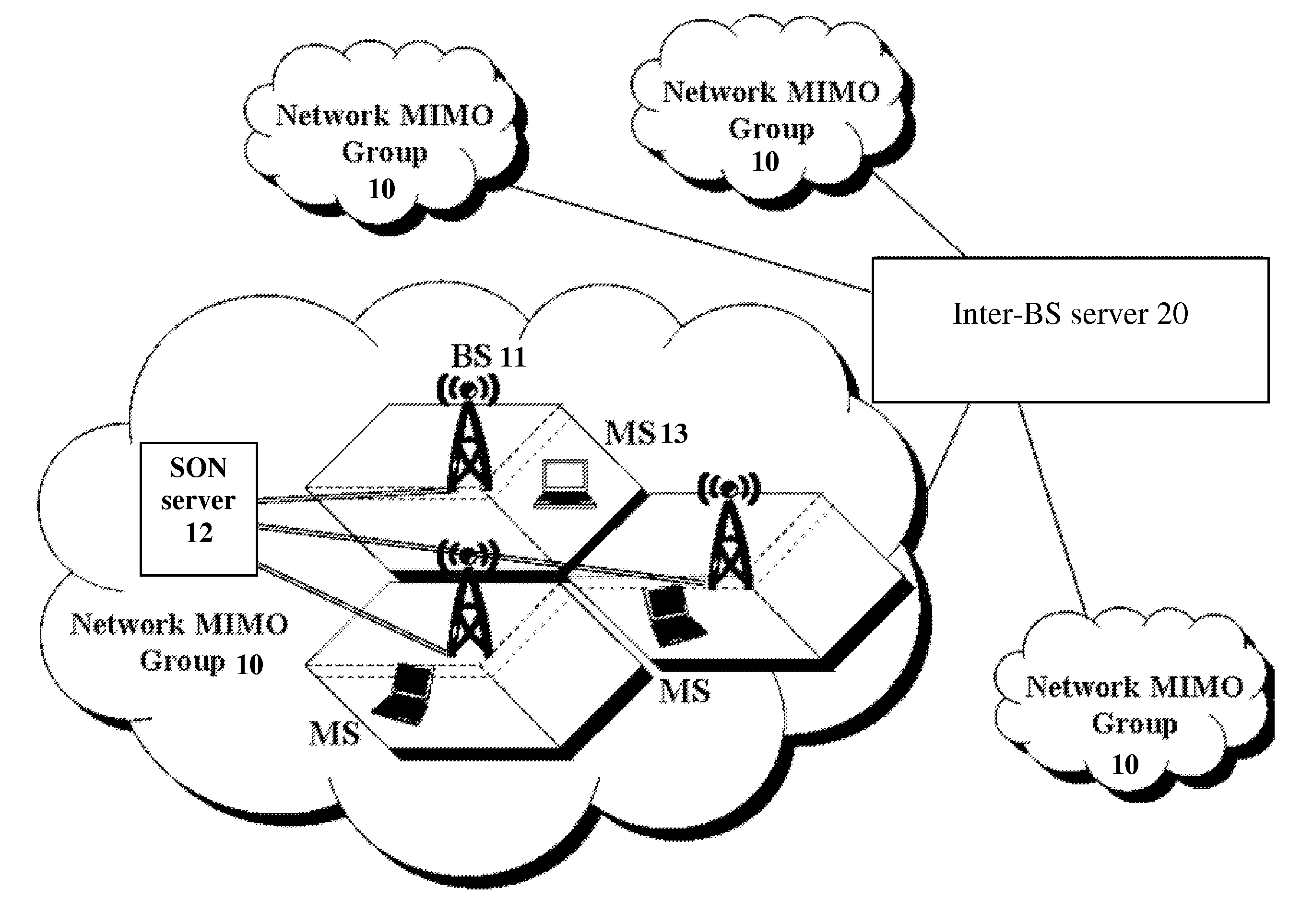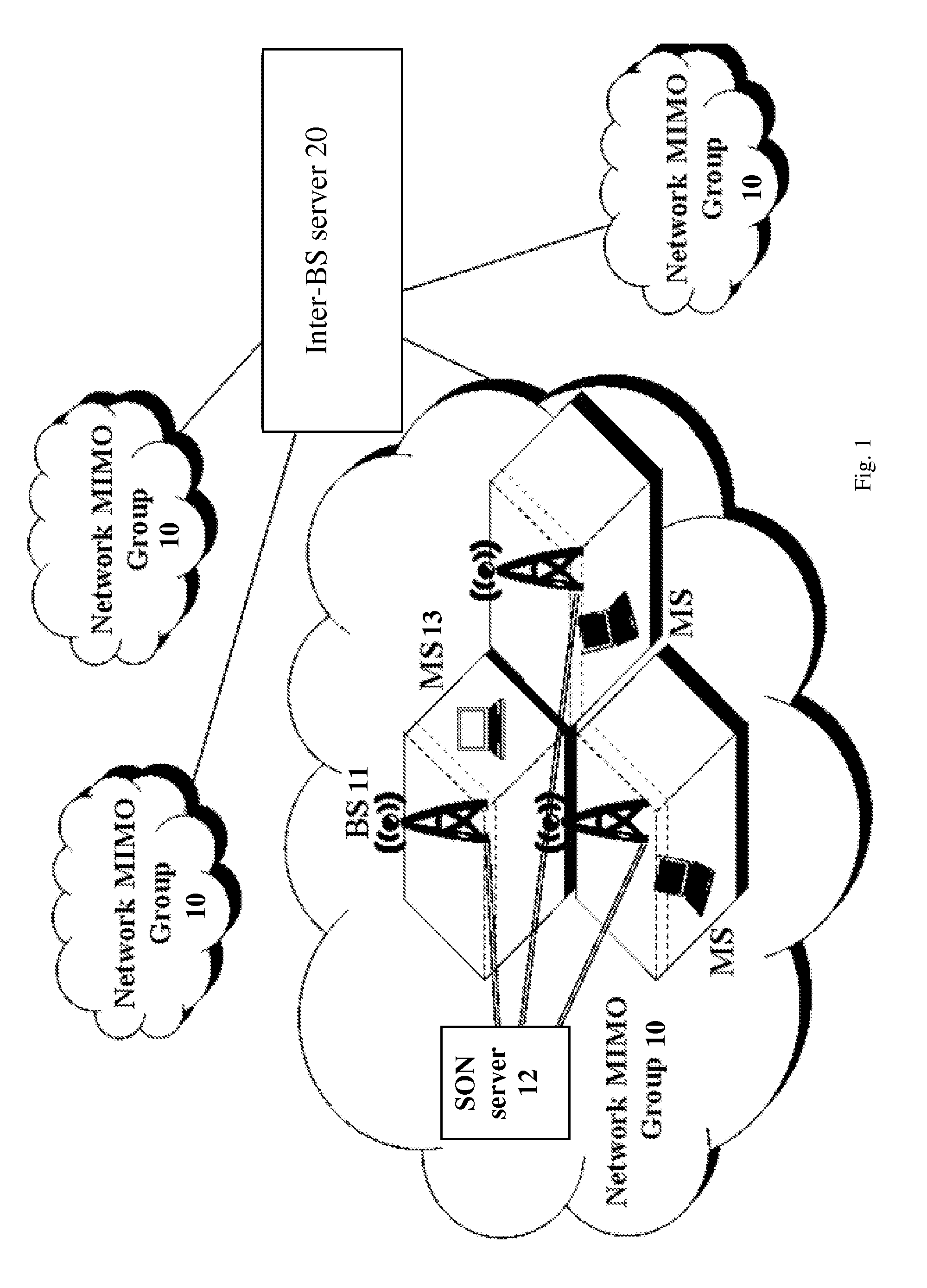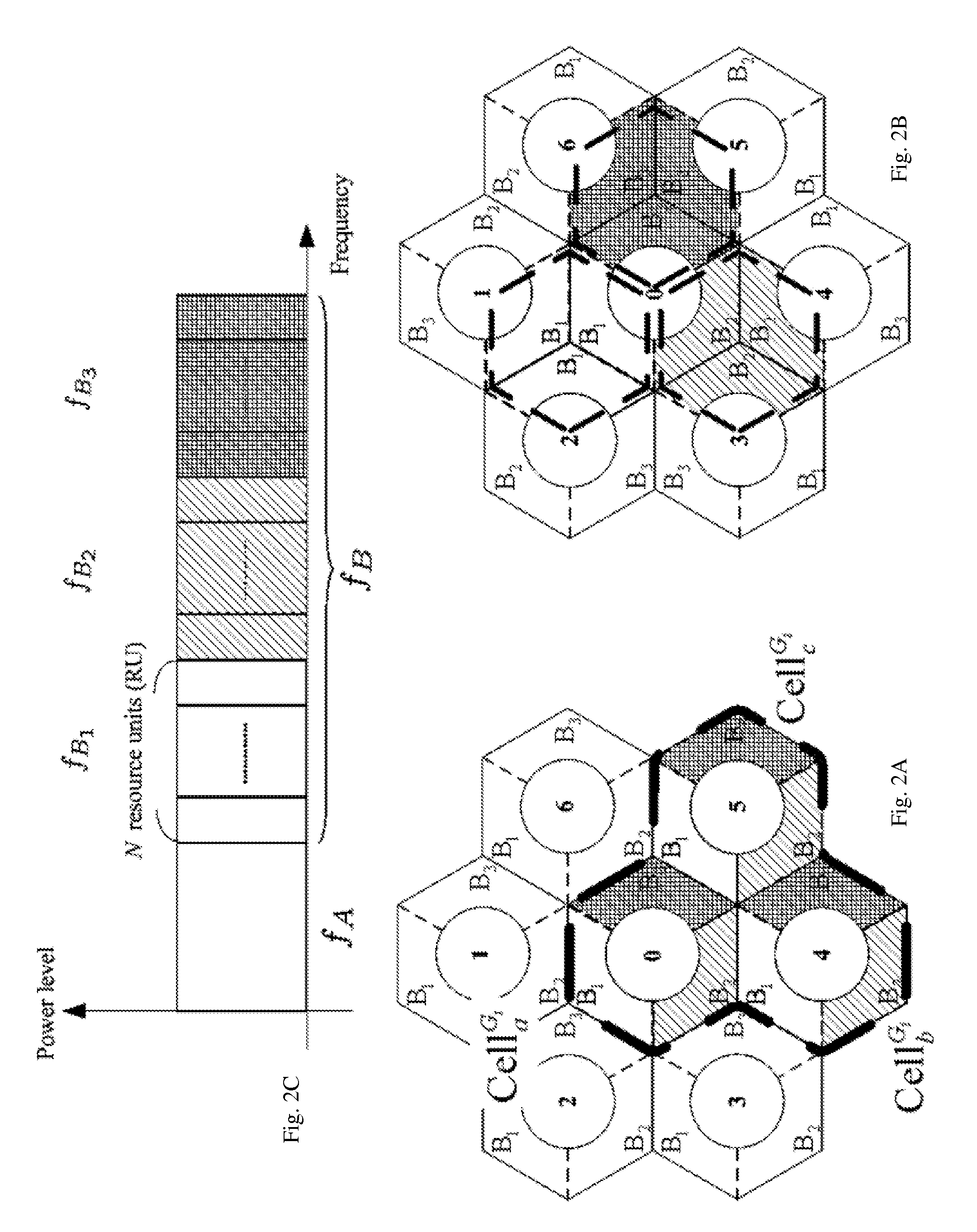Method and apparatus for coordinated MIMO signal transmission among multiple cells in wireless OFDM systems
- Summary
- Abstract
- Description
- Claims
- Application Information
AI Technical Summary
Benefits of technology
Problems solved by technology
Method used
Image
Examples
Embodiment Construction
[0032]Embodiments of the present invention provide a FFR-based network MIMO transmission method in a cellular system that employs cell sectoring using directional antennas. In preferred embodiments, the number of cells in a coordinated network MIMO group is three. Further, embodiments of the present invention provide a practical implementation of SON-based three-cell FFR-based network MIMO for a wireless OFDM (orthogonal frequency-division multiplexing) system.
[0033]In the embodiments described below, Co-MIMO or CoMP-JP transmission are used as the downlink multi-BS joint MIMO processing (network MIMO) mode, but the invention is not limited to such modes.
[0034]FIG. 1 schematically illustrates a self-organizing FFR-based network MIMO cellular network according to an embodiment of the present invention. In this network, multiple cells form coordinated groups (referred to as network MIMO groups), where the cells within each group cooperate with each other via a server (referred to as a...
PUM
 Login to View More
Login to View More Abstract
Description
Claims
Application Information
 Login to View More
Login to View More - R&D
- Intellectual Property
- Life Sciences
- Materials
- Tech Scout
- Unparalleled Data Quality
- Higher Quality Content
- 60% Fewer Hallucinations
Browse by: Latest US Patents, China's latest patents, Technical Efficacy Thesaurus, Application Domain, Technology Topic, Popular Technical Reports.
© 2025 PatSnap. All rights reserved.Legal|Privacy policy|Modern Slavery Act Transparency Statement|Sitemap|About US| Contact US: help@patsnap.com



